Guide To Brewing The Best Coffee: Water Temperature
July 21, 2023
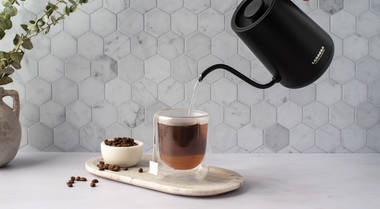
Coffee brewing comes down to the delicate balance between time, pressure, and temperature. How these three factors vary can dramatically impact the taste of your cup. So if you're interested in better understanding the nuances in your daily coffee order or want to brew higher quality coffee at home, it's important to first grasp the concept of temperature in the brewing (and drinking) process.
Tasting Coffee At The Right Temperature
There are a few reasons why some enjoy their coffee extra (extra) hot. If you have a long morning commute, you may want your coffee to keep warm until you arrive at work. Or perhaps you live in a colder climate, and a steaming cup feels extra satisfying. And although it's pleasant to slowly sip on a coffee throughout the morning, cups that are 150ºF or higher come with their disadvantages.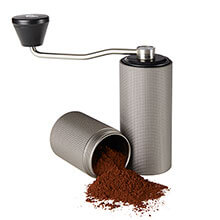
There's the obvious burn risks that come with hot coffee, but any brews over 150ºF are also hard to taste. The heat ultimately overpowers the flavors of your roast, making it impossible for your taste buds to pick up its individual notes. So if you'd like your coffee to stay warm during your morning commute, order it extra hot but wait a while for its temperature to drop between 120-140ºF.
Most people don't walk around with a thermometer to track the temperature of their coffee, but a good rule of thumb is to ask yourself: will I scold my tongue drinking this? If the answer is yes, perhaps give your coffee some more time until you can finally take a substantial sip. Trust us, your taste buds will thank you.
At 120-140ºF, your coffee will still be warm but also introduce all of the fine nuances found in its roast. If you can taste notes of fruit, earth, woods, or spices, your warm coffee is at its ideal temperature.
Cool Coffee Is Not The Same As Iced Coffee
A cup of hot coffee that has cooled down to temperatures below 120ºF tastes very different from cold brew. That's because these two coffee beverages, while similar in temperature, are brewed very differently, which means different chemical reactions produce their flavor.Once your hot coffee dips below 120ºF, the lactones in your brew create a different flavor profile. These organic acids undergo a chemical reaction (oxidation) and turn into carboxylic and chlorogenic acids, making room temperature/cool coffee more acidic. Furthermore, a coffee roast's natural sweetness shines through as your brew's temperature drops.
Cooled coffee is often presented as "spoiled" coffee, which might be true for lower-quality roasts. High-quality roasts, however, will continue to reveal new sides of their flavor profile as their temperature fluctuates, and not necessarily in unpleasant ways, either. However, a mug of coffee that has been sitting out for hours might oxidize to the point that it tastes way too acidic to enjoy, but room-temperature coffee that was freshly made can come down to personal preference. Don't shy away from leftover coffee in the drip machine because you might be pleasantly surprised.
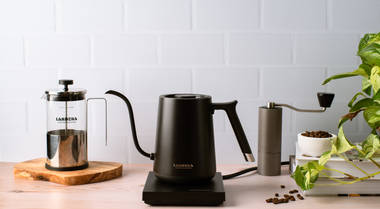
Temperature's Role In Brewing Iced Coffee
As discussed in Lardera's guide to making cold brew, achieving a wonderfully nuanced, delicious cold coffee requires gentle temperature and lots of time.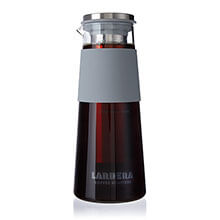
Typically, cold brew is made with water between 40-80ºF, with room-temperature water (roughly 68ºF) being ideal. Once you've calculated the brew concentration you're going for (i.e., the coffee-to-water ratio), let time do the rest. Unlike hot water, which quickly extracts the flavor of your grounds and causes them to bloom like warmed spices, cool water requires more time. We recommend placing your cold brew in the fridge for at least 12 hours for the best results.
As we previously mentioned, warm coffee continues to oxidize as it cools down, creating an unpleasantly acidic cup over time. This is due to heat's role in the brewing process, but heat can still produce delicious iced coffee when used correctly.
Recent trends like snap-chilled coffee use heat at the beginning of the brewing process to bloom the coffee grounds and get a full-bodied, extremely flavorful extraction before immediately dropping the brew's temperature to prevent unwanted acidity.
Successfully shifting temperature in the brewing process requires the right equipment, like our Lardera Cold Brew Pitcher, made from heat-resistant borosilicate glass that rapidly drops the temperature in a matter of minutes.
As always, check what material your brewing vessel is made of before attempting this method and ensure that it offers heat-resistant properties.
Temperature's Role In Brewing Hot Coffee
Hot water is far more efficient at extracting a coffee's flavors, but that doesn't mean you should set your electric kettle to its highest temperature setting.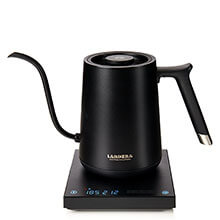
The hotter the water, the faster it will extract caffeine, flavor, and acid from your ground coffee. Too hot water can quickly cause over-extraction, resulting in unpleasant acidity and bitterness. On the flipside, using lukewarm water in quicker brewing processes (i.e., not cold brew) prevents coffee's natural oils from shining through, leaving you with a cup that lacks sweetness and overall body.
For brewing hot coffee, aim for temperatures slightly below boiling point (212ºF). Temperatures between 195-205ºF offer the best results, and adjust according to your coffee roast. Get the right temperature every time with the Smart Kettle.
Light roasts, which possess more fruity, floral, and crisp notes, can handle water temperatures on the higher end of this range. Not only does it help speed up the extraction process, but also brings out more of its natural oils that give light roasts more body.
Dark roasts, on the other hand, should take water temperatures on the lower end of this range. These oilier, more full-bodied roasts can taste overly bitter and be over-extracted if water temperatures in the brewing process are not monitored closely.
